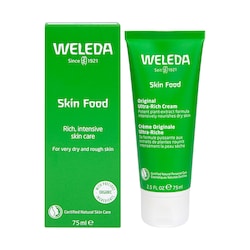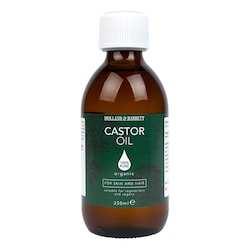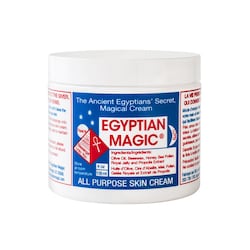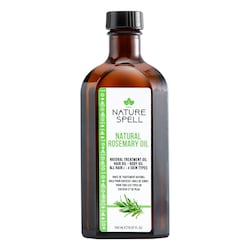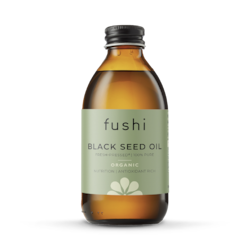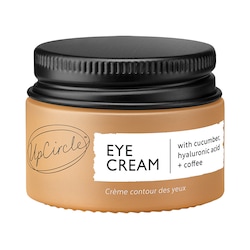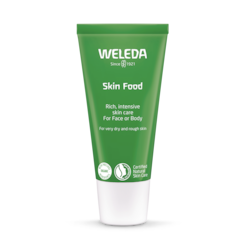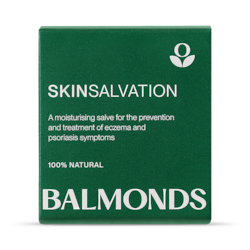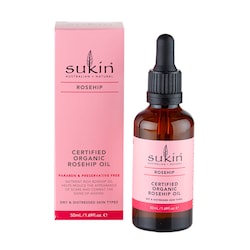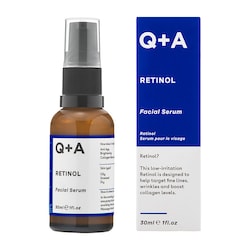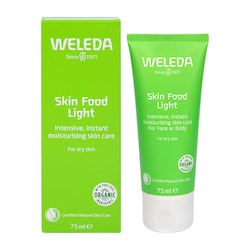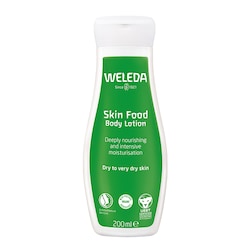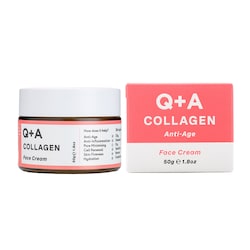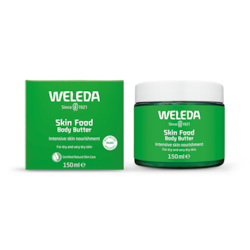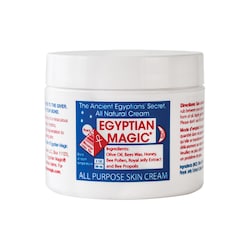20% off £35
Niacinamide benefits, uses & side effects
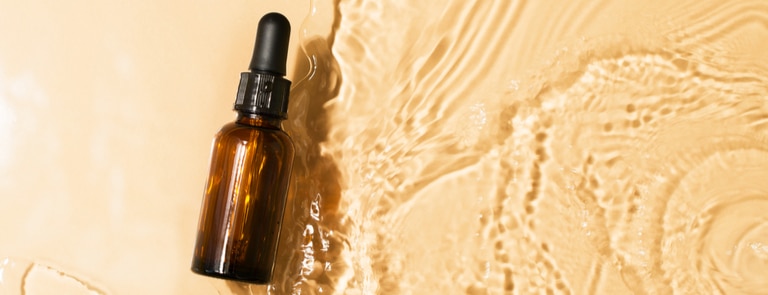
Niacinamide is one of the trendiest new skincare products on the market.1 Often used as a single-ingredient serum, niacinamide beauty products often promise to refresh and soothe the skin, as well as minimise pores and more.2
While we might be used to seeing niacinamide in our beauty products now, this hyped-up ingredient actually has a host of other reported benefits too.
If you’re wondering whether it’s worth including in your wellness routine, we’ve got everything you need to know below.
What is niacinamide?
Niacinamide isn’t a mystical ingredient created solely for the purpose of beauty products. It’s actually a part of the vitamin B3 molecule (which is also known as niacin).
It’s an essential vitamin, which means our bodies don’t produce it naturally, and we need to get it from external sources.3
We can get vitamin B3 (and consequently, niacinamide) from the food we eat. Dairy products, meat, fish, grains, and green vegetables all contribute to our vitamin B3 intake.4
As a compound, niacinamide is extremely water-soluble too, which makes it great for topical use. That’s why we often see it in beauty and skincare products – because it can be easily absorbed by the skin.5
Handpicked content: What does Vitamin B do?
Different forms of niacinamide
Niacinamide is in all sorts of different serums, creams, lotions, and cleansers.6
You can buy niacinamide serums, such as the Oleus Niacinamide & Zinc Serum, as well as niacinamide powder, niacinamide toners and niacinamide cream, such as Clear Skin Days Mattifying Barrier Moisturiser, which contains niacinamide alongside numerous other ingredients.
You can also find niacinamide in specific vitamins and supplements, such as multivitamins or B-complex supplements.
It’s also possible to get varieties that just contain niacinamide.7
If you’re looking for a supplement that contains niacinamide, remember to look for that name on the label. It may also be called nicotinamide or niacinamide.8
Most of us should be consuming all the niacinamide we need, as long as we’re eating a healthy and balanced diet. It’s best to speak to your doctor before starting any new supplements, especially if you have a health condition or take medication.9
Summary
- Niacinamide is part of the vitamin B3 molecule, which is also known as niacin
- It’s extremely water-soluble and absorbs really well into skin
- You can find it in serums, creams, lotions, and cleansers, as well as specific vitamins and supplements
8 niacinamide benefits
There are numerous niacinamide benefits. However, they do depend on whether your chosen product is taken orally or used as a topical aid.
-
Niacinamide for skin
Niacinamide has been recognised in studies as being an alternative to steroids and oral antibiotics for numerous skin concerns.
It reportedly doesn’t have the same side effects as steroids or antibiotics, such as hypertension, immunosuppression, osteoporosis and bacterial resistance, either.10
-
Niacinamide for breakouts
One particular study examined using nicotinamide to combat breakouts and rosacea.
It confirmed there are potential benefits to using oral nicotinamide as an alternative approach to managing inflammatory lesions associated with acne vulgaris and acne rosacea.11
-
Niacinamide for oily skin
Clinical studies have shown niacinamide can improve excess sebum production, which can lead to overly oily skin.
It can also help with the appearance of pores, fine lines and keep the skin's barrier intact.
How does it do it? By helping skin to retain moisture and reducing dryness and irritation.
Dry skin can result in oil overproduction, which can then lead to bacteria, blocked pores, breakouts and blemishes.
Niacinamide’s sebum-reducing properties are believed to help with mild breakouts too. 12
-
Niacinamide for skin redness
Topical niacinamide has been proven to help calm redness caused by sunlight.
However, it should not be used instead of sunscreen, but in addition to it.14
-
You can pair it with other skincare ingredients
Certain skincare ingredients pack more of a punch when they’re used in conjunction with other ingredients.
For pigmentation, nicotinamide can be used alongside other ingredients, such as hydroquinone, kojic acid, arbutin and soy.
Together, they work synergistically to help fade brown spots and discoloration.15
-
Niacinamide for fine lines and wrinkles
According to a study published in the International Journal of Cosmetic Science, niacinamide can help reduce the appearance of fine lines and wrinkles, as well as spots and hyperpigmentation.
A total of 50 women used a moisturiser that contained 5% niacinamide on one side of their face and a placebo moisturizer on the other side for 12 weeks.
At the end of the study, the side of their face where they had applied niacinamide, showed significant improvements in hyperpigmentation spots, fine lines, and wrinkles compared to the other side.16
Handpicked content: 10 of the best ageless beauty products
-
It may improve skin tone and brightness
Niacinamide can be used to help reduce the appearance of dark patches, sun freckles and spots.
What’s more, in specific concentrations, it’s believed to be able to interfere with the enzyme responsible for producing pigmentation, or melanin, and improve skin tone.17
A 2016 study in the Journal of Drugs in Dermatology examined a product that contained skin brighteners, including retinol, the antioxidant, resveratrol, as well as niacinamide.
After being applied for four weeks, the formula reduced hyperpigmentation, improved clarity, and evened skin tone.
-
Niacinamide and hydration
We briefly touched on niacinamide’s moisturising benefits at the start of this list of benefits.
Its moisture-retaining properties are so notable, we’re going to focus some more on them here.18
When paired with glycerin and hyaluronic acid, niacinamide can be even more moisturising.
By supporting the production of ceramides (natural fats in the skin) niacinamide can also help improve the skin’s barrier, preventing both water loss and stopping potential irritants from getting in.
Handpicked content: A quick guide to hyaluronic acid
Summary
- The benefits of niacinamide are widespread
- They include calming a variety of skin concerns, including breakouts, reducing oily skin, calming skin redness, and improving the appearance of fine lines and wrinkles
- You can pair it with other ingredients, such as Vitamin C and hyaluronic acid, for maximum effect
Can I use niacinamide everyday?
Yes, you can. It’s renowned for being a gentle ingredient that gets on well with the most sensitive skin.
You can use it any time of the day, or once or twice a day, depending on the manufacturer’s guidance.
You can also combine it with other products too, but make sure you don’t overload your skin with too many different ingredients all at once.
As is the case with all new skincare products, do a patch test to see how your skin gets along with niacinamide first.
If it’s ok, work your way up to using a higher concentration (most products tend to go from 2 to 10%).19
How to use niacinamide
To get the best possible results from using niacinamide, apply it topically (e.g. a cream, lotion or serum) and give it plenty of time to soak into and work its magic on your skin.20
Studies have shown that niacinamide penetrates well into skin, so you want your skin to have time to absorb the niacinamide and put it to work.
In terms of where it fits within your daily skin routine, wash your skin, apply your toner, followed by an anti-ageing product, such as retinol or Vitamin C, and then apply niacinamide.
You can either do this by applying it as a standalone product or mixing some into your moisturiser and using it that way.21
Handpicked content: Get glowing skin with Vitamin C
How long does niacinamide take to work?
It generally takes around 8 to 12 weeks before you start to see tangible results, although some people may start to see a slight difference right away.
If you’re using a product that contains 5% niacinamide or more, you may initially experience some sensitivity, which should hopefully ease once your skin gets used to it.
If the irritation persists or gets worse, don’t continue to use it.22
Niacinamide side effects
Niacinamide is thought to be safe for most healthy adults, although it’s always worth proceeding with caution.23
Topical niacinamide treatments are thought to be safe for most skin types.28
However, it’s worth keeping an eye on any irritation when using your chosen product.
Remember to always follow the instructions to avoid using too much too soon and stop if you notice any unwanted symptoms.
Summary
- Because it’s so gentle on skin (even sensitive skin) you can use niacinamide every day
- You can apply it once or twice a day as part of your skincare routine
- Side effects are minimal and mainly associated with taking niacinamide supplements
A final few words about niacinamide….
You may not have heard of niacinamide until now, but now that you have, you’ll be glad you have.
This one ingredient alone is a skincare staple that’s capable of protecting and repairing skin in so many ways.
And the even better thing is, when you combine it with other skin-boosting ingredients, such as hyaluronic acid or Vitamin C, its ability to soak into and work its magic on skin gets even better.
Give it a try, either on its own or combined with something else; you’ll be glad you did.
8 of the best niacinamide serums
8 of the best niacinamide serums
Wondering which niacinamide serum is best for you? Here are our top 8 picks.
Read more
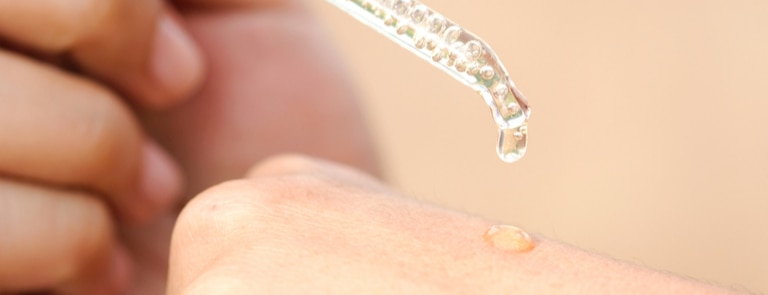

Last updated: 23 June 2021
- https://www.harpersbazaar.com/uk/beauty/skincare/a33455558/most-searched-beauty-ingredients-2020/
- https://ods.od.nih.gov/factsheets/Niacin-HealthProfessional
- https://pubchem.ncbi.nlm.nih.gov/compound/Nicotinamide
- https://www.stylist.co.uk/beauty/niacinamide-skin-benefits-best-skincare-products/251616
- https://pubchem.ncbi.nlm.nih.gov/compound/Nicotinamide
- https://www.glamourmagazine.co.uk/gallery/what-is-niacinamide
- https://ods.od.nih.gov/factsheets/Niacin-Consumer/
- https://www.encyclopedia.com/education/dictionaries-thesauruses-pictures-and-press-releases/niacinamide
- https://www.nhs.uk/common-health-questions/food-and-diet/do-i-need-vitamin-supplements/
- https://www.ncbi.nlm.nih.gov/pubmed/16871774
- https://www.ncbi.nlm.nih.gov/pubmed/168717741
- https://www.refinery29.com/en-gb/niacinamide-skin-benefits-acne
- https://pubmed.ncbi.nlm.nih.gov/8841834/
- https://www.refinery29.com/en-gb/niacinamide-skin-benefits-acne
- https://www.byrdie.com/vitamin-b3-benefits#the-benefits-of-vitamin-b3
- https://www.self.com/story/what-niacinamide-can-do-for-your-skin
- https://www.prevention.com/beauty/skin-care/a34151630/niacinamide-for-skin-care/
- https://www.prevention.com/beauty/skin-care/a34151630/niacinamide-for-skin-care/
- https://www.vogue.com/article/niacinamide-guide-skin-care-benefits
- https://www.vogue.com/article/niacinamide-guide-skin-care-benefits
- https://www.prevention.com/beauty/skin-care/a34151630/niacinamide-for-skin-care/
- https://www.stylist.co.uk/beauty/niacinamide-skin-benefits-best-skincare-products/251616
- https://www.ncbi.nlm.nih.gov/pmc/articles/PMC2921764/
- https://www.ncbi.nlm.nih.gov/books/NBK114304/
- https://pubmed.ncbi.nlm.nih.gov/28541582/
- https://www.ncbi.nlm.nih.gov/books/NBK114304/
- https://www.rxlist.com/niacinamide/supplements.htm
- https://www.vogue.co.uk/article/skincare-alphabet-what-is-niacinamide



